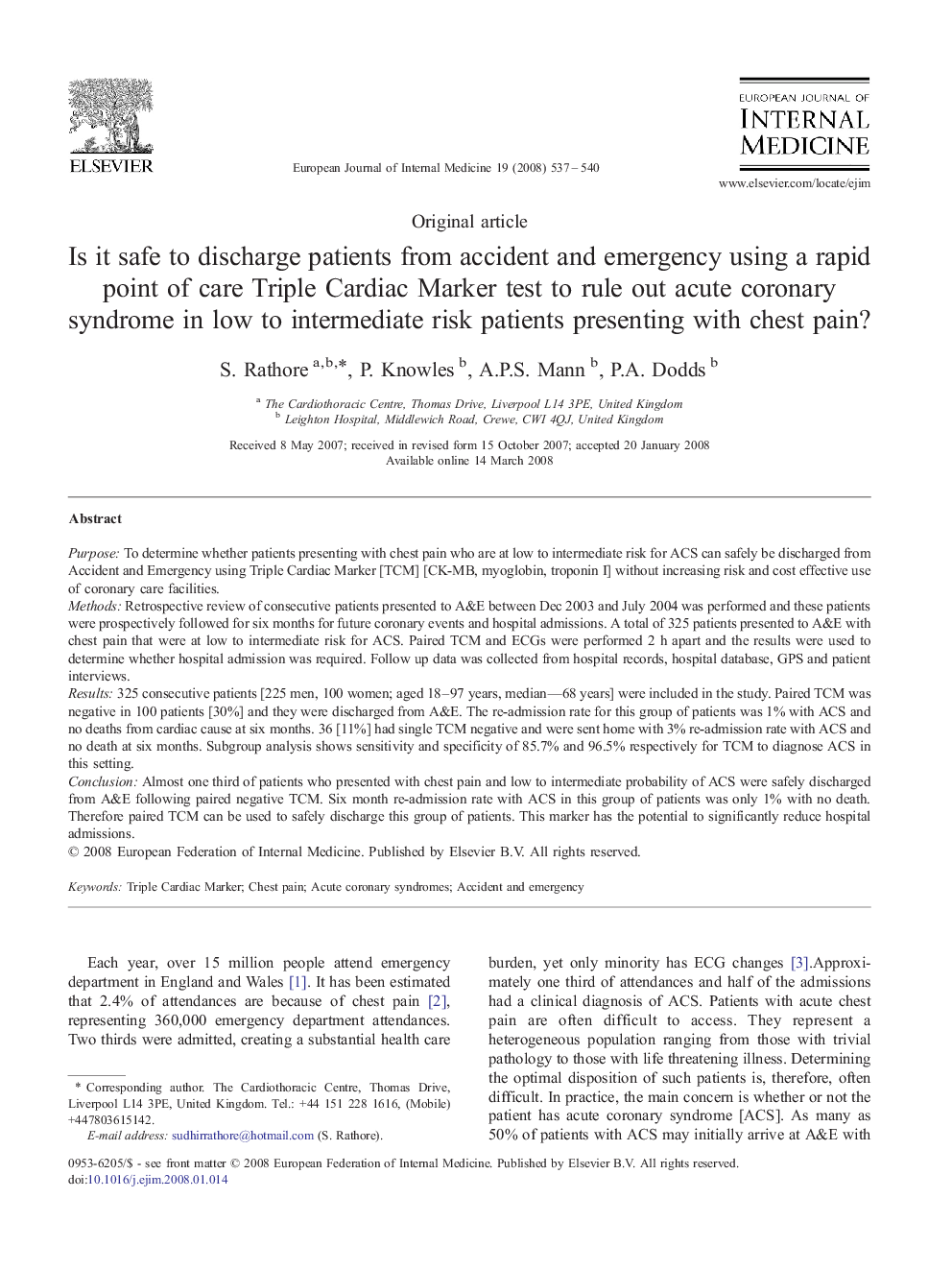| Article ID | Journal | Published Year | Pages | File Type |
|---|---|---|---|---|
| 3467865 | European Journal of Internal Medicine | 2008 | 4 Pages |
PurposeTo determine whether patients presenting with chest pain who are at low to intermediate risk for ACS can safely be discharged from Accident and Emergency using Triple Cardiac Marker [TCM] [CK-MB, myoglobin, troponin I] without increasing risk and cost effective use of coronary care facilities.MethodsRetrospective review of consecutive patients presented to A&E between Dec 2003 and July 2004 was performed and these patients were prospectively followed for six months for future coronary events and hospital admissions. A total of 325 patients presented to A&E with chest pain that were at low to intermediate risk for ACS. Paired TCM and ECGs were performed 2 h apart and the results were used to determine whether hospital admission was required. Follow up data was collected from hospital records, hospital database, GPS and patient interviews.Results325 consecutive patients [225 men, 100 women; aged 18–97 years, median—68 years] were included in the study. Paired TCM was negative in 100 patients [30%] and they were discharged from A&E. The re-admission rate for this group of patients was 1% with ACS and no deaths from cardiac cause at six months. 36 [11%] had single TCM negative and were sent home with 3% re-admission rate with ACS and no death at six months. Subgroup analysis shows sensitivity and specificity of 85.7% and 96.5% respectively for TCM to diagnose ACS in this setting.ConclusionAlmost one third of patients who presented with chest pain and low to intermediate probability of ACS were safely discharged from A&E following paired negative TCM. Six month re-admission rate with ACS in this group of patients was only 1% with no death. Therefore paired TCM can be used to safely discharge this group of patients. This marker has the potential to significantly reduce hospital admissions.
